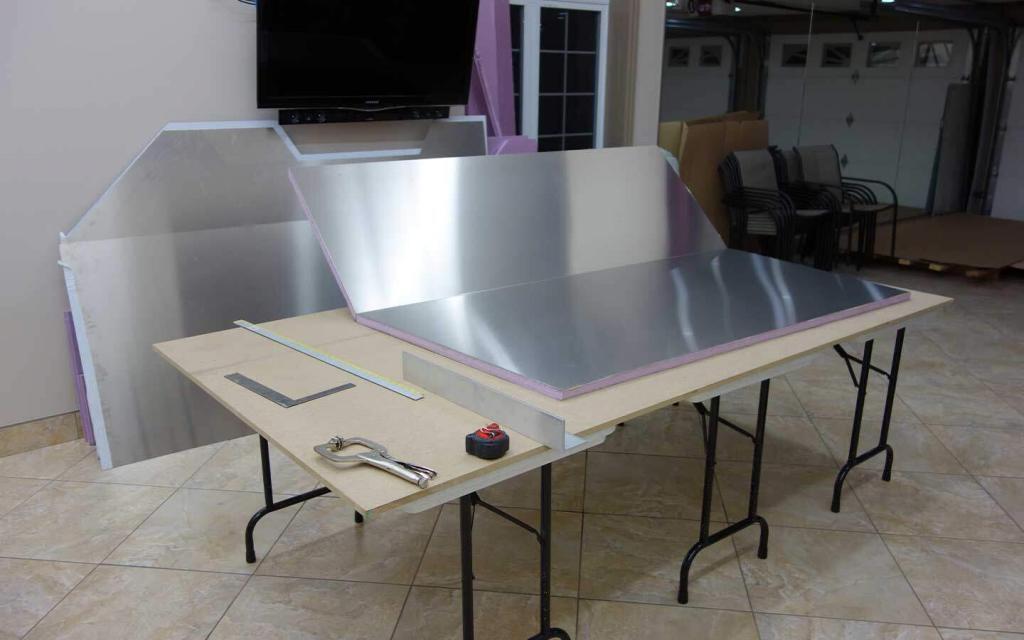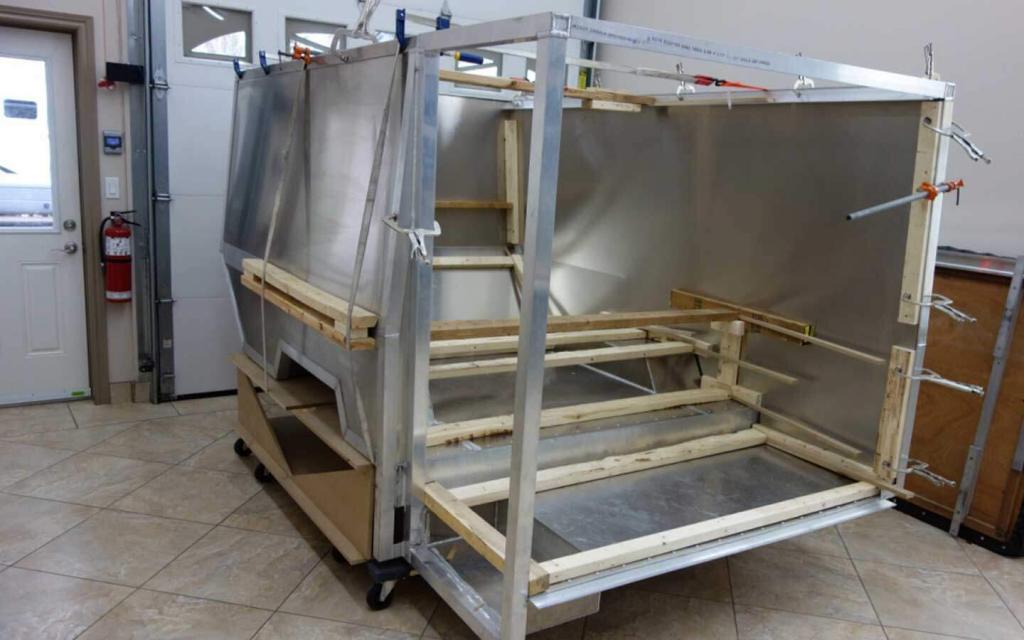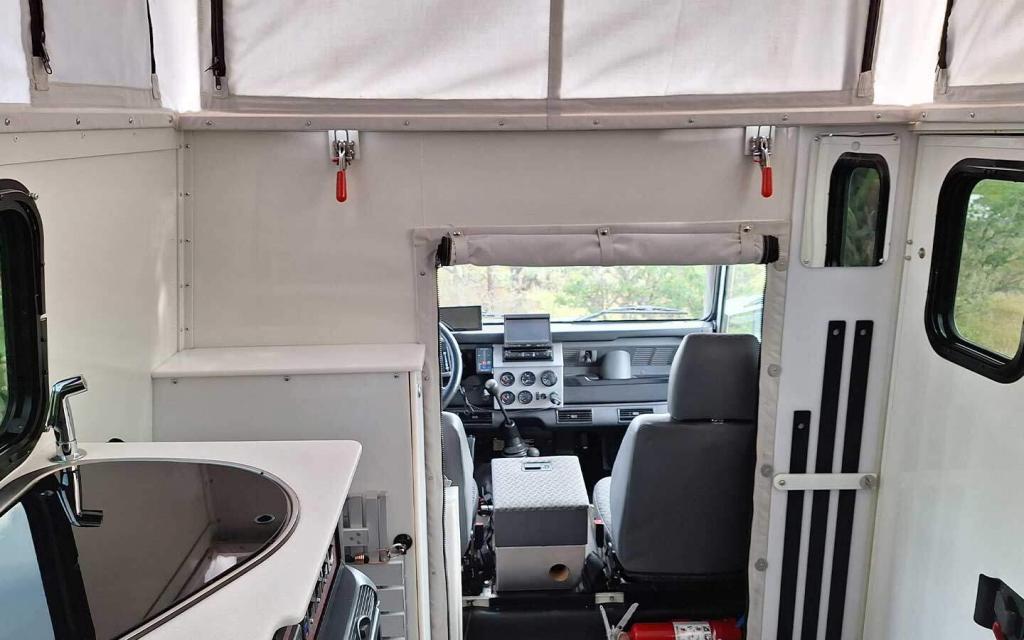Overlanding can be described as adventure and exploratory travel, whereby the journey itself is more important than a particular destination. Some may choose a minimalistic approach and undertake their journey on foot, by bicycle or motorcycle. Others prefer all-wheel-drive vehicles equipped with whatever lends their stay in remote areas a little more homely touch.
I don’t think anyone will disagree that living in a vehicle is more often than not burdened with compromise. So it’s up to you to find the most agreeable balance when you’re preparing to go away on a trip—regardless of whether your talking about a long weekend, your annual vacation, or a world circumnavigation lasting several years.
The thing about the ideal expedition truck is that you are highly unlikely to find it as an off-the-shelf product in a showroom or on any one of the niche classified portals. If you choose to place your wish list in the hands of a custom builder, they might bring you closer to that elusive object of desire, but the price tag will most likely have a sting in its tail.
Steven Webster is by no means new to vehicle-supported travel and has owned his fair share of Toyota Land Cruisers (FJ40, BJ40 and BJ42), two VW vans, and a Land Rover 110. But not one was able to fully satisfy his expectations. What he did know though, was that the heavy trucks favoured by Europeans (Unimog, Mercedes and MAN) were too big and the popular 4x4s were too small. Somehow he needed to combine the amenities of a motorhome with off-road prowess so that he could go anywhere he chose.
That vehicle didn’t exist, so he took fate into his own hands and began with a blank sheet of paper.
EXPECTATIONS
Steven knew where his travels were going to take take him. Namely, the remote expanse of Mexico’s outback and the narrow streets of historical colonial towns. He also required self-sufficiency for extended periods so that he wouldn’t have to rely on any infrastructure—generous fuel and water reserves, a domestic electrical system and a functional kitchen.
The interior needed to draw similarities from the Eurovan campers, but with improvement—he didn’t want the big sliding door, even though a side entrance played a significant role in his design. The camper side of the vehicle should be swift to setup upon reaching a destination and fast to break down when the time came to leave again.
To summarise:
- Exterior dimensions should be confined
- Interior should be homely
- The driving experience should be predictable on pavement and capable in the rough
- The facilities should support two people for extended periods
VEHICLE
As far the vehicle was concerned, the decision had already been long felled and a crew cab 1999 Defender 130 Td5 riding on Michelin XZL 8.25 R16 C tyres was purchased.
Compared to the Defender 110, the 130 is 17” longer, can carry 500 kg more, and was designed primarily for load-bearing duties and a career in the army. All criteria that, when looked at in their entirety, culminate in a viable foundation upon which to build an expedition vehicle.
WISH LIST
- Two auxiliary tanks (80 L under the driver’s seat, 60 L under the passenger seat)
- 90 L of fresh water, 60 L of grey water
- 400 watts of solar, 480 Ah lithium batteries, and a 1,500-watt pure sine wave inverter
- Induction stove
- Engel compressor refrigerator
- Webasto heater
- Esper hydronic heater
- 6 L hot water tank
- Camp toilet and shower
- Sleeping and seating for two adults
- Pop-up roof to provide standing room
- Side entry into the accommodation
- Cabinets providing ample storage and easy access
The fully loaded vehicle should not exceed 3,500 kg.
MODIFICATIONS AND BUILD



To begin with, the Defender’s pick-up bed was discarded and the cockpit underwent some surgery to remove the rear bulkhead, second row seats and doors. At this point, Steven established the footprint of the cabin he now had to design from scratch.

The starting point was the pop-up top and a 109 roof was procured, dismantled and reassembled with a custom centre panel to increase its overall width. To ensure the structural integrity, cross channel ribs were fabricated and installed using rivets and adhesive.




The cabin itself utilises a welded aluminium frame, supporting aluminium/polystyrene sandwich panels for the walls which are assembled using adhesives and sealants common to the automotive industry.

With the cabin’s side and rear walls in place, scissor hinges were modelled on those used in VW camper vans and gas struts were specified for the roof’s weight (including the planned roof rack and solar panels).

The lower section of the rear wall is angled at 45° to prevent compromising the departure angle of the Defender. The fuel filler is incorporated into the right wall behind the wheel arch.

The floor is made from thicker aluminium sheet (installed using rivets, adhesive and sealant) and lined with wood.


The side entrance door rests on two industrial quality hinges with nylon bushes for smoother action. Apertures were cut into the walls and door for heavily tinted double-pane windows. The front wall permits access from the cockpit, but the cabin can be isolated for additional security during RORO shipping.

The custom-made 90 L water tank sits on top of the right hand wheel arch and underneath an upholstered bench.


The combined kitchen and wardrobe unit adopts the same structural concept as the cabin itself: welded skeleton with sandwich panels. The kitchen houses a sink with hot and cold water, a compressor refrigerator, an induction stove top, drawers, and ends with a wardrobe in the rear corner.

The cabin was finished inside and out with a hard-wearing epoxy coating.


The rear wall accommodates the twin sofa. To prepare the bed, the sofa slides forwards, the backrest folds down, and the segmented bed frame and mattress swing down on top.



Additional work to the exterior includes a Safety Devices external roll cage, which can also carry an extra spare tyre over the cockpit. The roof rack with solar panels allows a flow of air beneath the panels and also acts as a safari roof to reduce the cabin’s interior temperature.

The rear rack for the spare tyre and wheel, and a storage box (which is not shown).
EXPEDITION READY
- Safety Devices internal roll cage (cockpit)
- Safety Devices external roll cage (cockpit)
- Raised air intake
- ARB bumper
- Warn winch
- Differential guards and skid plate
- Checker plate body protection
- Two auxiliary fuel tanks with gauges
- 255/85 R16 BFGoodrich M/T tyres
- Engine optimisation
- Webasto Air Top 2000 diesel heater
- Centre heater box / cubby box
- Four 100-watt solar panels
- Four 120 Ah domestic batteries
- Alarm
- Factory air condition (cockpit)
Fully equipped, the Low Gear 130 expedition vehicle can accommodate two persons for extended remote travel. The combined fuel tanks offer a maximum range of 1,800 km.


BUILD IT YOURSELF
If you are interested in creating your own expedition-ready Defender 130, Steven offers fully detailed plans, 3D model, and bill of material for $ 1.500.
STEVEN WEBSTER / LOW GEAR
Photography: Steven Webster







